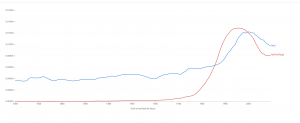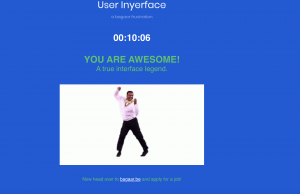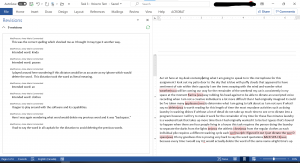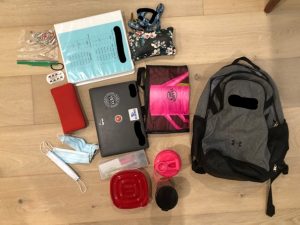Task 4: Manual Scripts and Potato Printing

My potato printing of the word MOWED
Instructions:
Choose a five-letter word and print it twice using potato stamps (a short tutorial on how to create these stamps is available below). The word cannot have repeated letters. Try to make both copies as identical to each other as possible. Take a picture of both copies together and post it in your personal space along with a reflection on the process of preparing, crafting and producing both copies (approximately 300 words).
Was there something particularly challenging in the process?
For someone who spends little to no time in the kitchen and who is not artsy in any way, I found the actual cutting of the potato particularly difficult. Where for some cutting may come naturally, for me, it is foreign. In addition, I was concerned about cutting my fingers or my hand as I carved out the centre of the O and the centre of the D. I do not have muscle memory as it pertains to cutting or prepping food. Hence, it made me realize that this is a learned skill.
How much time did it take for you to create the stamps?
Given my relative ineptitude for cutting food, I took far longer than I anticipated. As a result, I spent approximately 35 minutes, after some trial and error on letters. At first, I attempted to create the stamps, as shown in the YouTube clip. This process proved frustrating, as I could not complete the letters as I would have wished, so I decided to cut thick slices of the potato and cut the letters out that way and use toothpicks to dip the letters into the paint.
Have you notice anything particular about the letters that you have chosen to reproduce?
I figured from the outset that this would be a bit of a struggle for me, so I strategized in choosing my word. I knew the letters M and W could be inverted to represent one another. So, to minimize my cutting, I decided on a five-letter word that used an M and W and what I figured to be the more simplistic letters to cut.
Considering the time and effort that took you to create a 5-letter word, how do you feel about the mechanization of writing?
I have a greater appreciation of the physical skill and muscle memory required to write. It is not easy, and it takes a significant amount of time to become second nature. As I contemplated the letters without repeating any of them, I wanted to choose a word where one letter could ‘double’ for a different letter. This very conscientious decision made me reflect on the idea of when writing was completed by the printing press and the deliberate intention of how letters were used to create written work during times when resources and materials were finite.

 healing the Earth and progressing mankind, her gift of virtual connections has given all of us a unified objective.
healing the Earth and progressing mankind, her gift of virtual connections has given all of us a unified objective. er focus to creating solutions rather than pointing out problems. Her brilliant
er focus to creating solutions rather than pointing out problems. Her brilliant
 the outside. She and her friends could meet on mountaintops, looking down at the now extinct, grizzly bear. What a beautiful sight! She oft times felt a sense of pity towards the others, those who toiled so they could benefit from her parent’s wealth; those who had to reside in the other world, reality, not virtual, where it is hot and unforgiving. But that pity is short lived as Shelley dives into other virtual worlds, each distancing herself further from the real world around her and any degree of empathy for her fellow man.
the outside. She and her friends could meet on mountaintops, looking down at the now extinct, grizzly bear. What a beautiful sight! She oft times felt a sense of pity towards the others, those who toiled so they could benefit from her parent’s wealth; those who had to reside in the other world, reality, not virtual, where it is hot and unforgiving. But that pity is short lived as Shelley dives into other virtual worlds, each distancing herself further from the real world around her and any degree of empathy for her fellow man.



